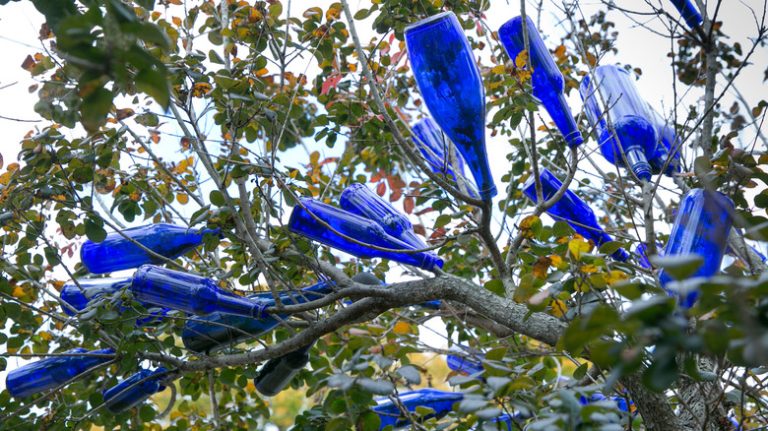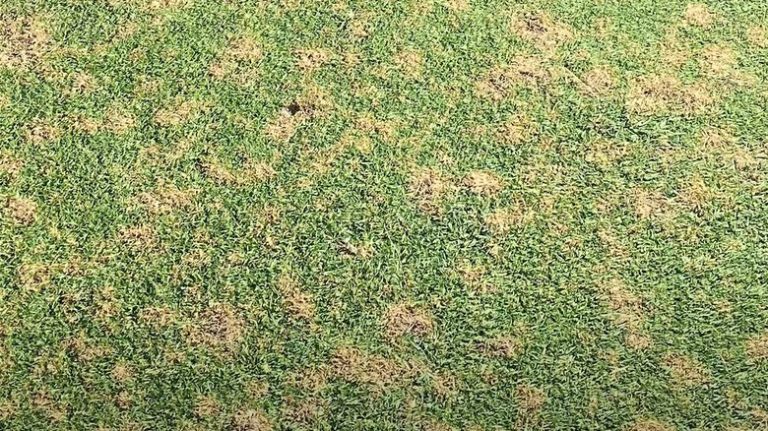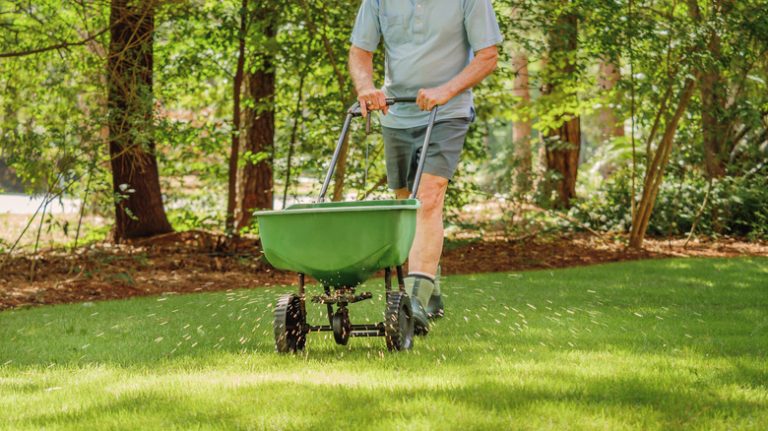Pruning the bushes and trees in your landscape can feel like a daunting task. If you are facing an overgrown area, you may be wondering if you should remove plants or just trim them back. Different landscape plants have different pruning requirements, but if you’re overwhelmed, you may be tempted to follow the “1 foot pruning rule” that recommends just cutting everything down to 1 foot above the ground. The process is simple enough and it temporarily takes care of the overgrowth. However, in most situations, it comes with many downsides and does not resolve the root of the problem. Did your mother ever cut your bangs too short and you just had to wait for them to grow back? Well, the 1 foot pruning rule is a lot like that except for your entire landscape, which will take more than a month to look better.
Except in situations of severe damage or growing hedges like boxwoods, there is no reason to cut your plants so close to the ground. The fundamental rule for trimming trees and bushes is to remove no more than ⅓ of their overall growth. If you are planning to remove a large bush, cutting it closer to the ground will make it easier to remove. Otherwise, cutting an overcrowded landscaped area down to 1 foot will ruin your curb appeal without solving any problems.
When bushes or trees are too close to the house
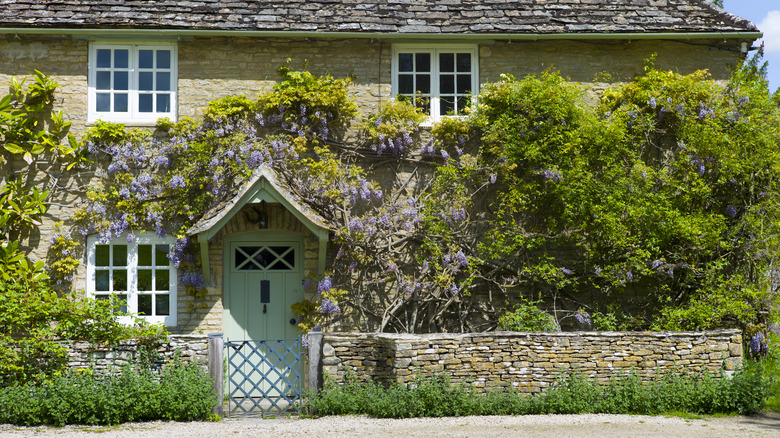
One situation in which you might be tempted to severely cut back a large bush or tree is if it’s too close to the house. While this will visually resolve the issue on the surface, it will not fix the fact that there may be strong roots too close to your home’s foundation. The appropriate distance between a tree or bush and your home depends entirely on the type of plant. The popular Japanese maple tree is often planted too close to a house, as even dwarf varieties of this tree should be no closer than 5 feet from your home. Before you plant anything, make sure you understand how tall and wide it will be at maturity and place it accordingly.
Overgrown bushes and trees placed too close to your home can do more than cause root damage to your foundation. This large greenery can impede the flow of water away from the base of your house as well as cause mold and rot in the areas where there is no airflow between the bush or tree and your home. For existing overgrown plants that are too close to your house, you may have to make the difficult decision to remove them completely to preserve the structure of your home.
Crowded areas
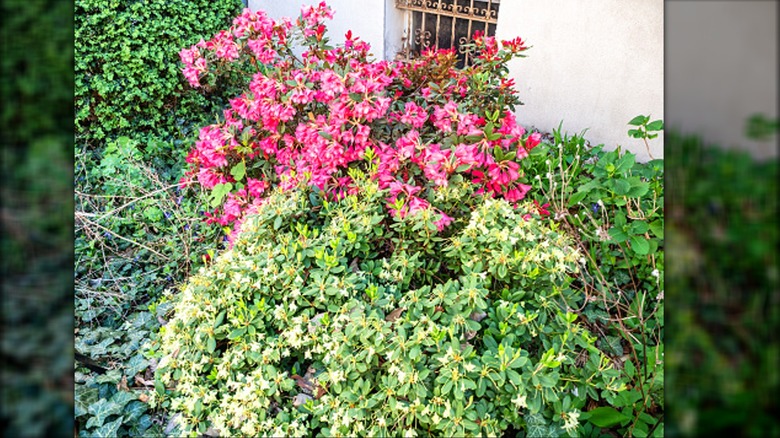
Sometimes we get a little overzealous at the garden center and buy more plants than we actually have room for. We get it — they’re all so pretty! If the required distance between plants is ignored in favor of squeezing in more greenery, you may have a landscaping mess once they reach maturity. If you follow the 1 foot rule, you’re going to have an unattractive mess for at least a year, but leaving your mature plants in an overcrowded space isn’t exactly pretty, either. This kind of overgrowth also often leads to fungal and pest issues, which are difficult to deal with when there’s no room to work.
In an overcrowded area, you have two options: either remove some of the landscaping or maintain yearly pruning of your plants. While the ideal long-term solution is to remove a few large bushes to make room for everything, it can be a big job that you don’t want to do. By pruning back ⅓ of each of your plants yearly, you can keep them a little smaller so they are not so crowded.
Plants that bloom on old wood
VH-studio/Shutterstock
Here is where this 1 foot pruning trend is a real problem. Some plants, including various varieties of hydrangeas and azaleas, bloom on old wood, which means that they only produce flowers on last year’s growth. If you were to cut a plant that blooms on old wood down to 1 foot tall, you would be removing all of this year’s flowers. If you do it again next spring to make room in your overcrowded landscape, you won’t get blooms next year, either. You may begin to wonder why your hydrangeas never bloom, and that kind of pruning is the culprit.
To ensure you get flowers on bushes that bloom on old wood, only remove branches that are at least two years old. On some hydrangeas, these would be the canes that produced flowers last year. Of course, you can remove any damaged branches to keep your landscape looking tidy. However, keep in mind that not all bushes bloom on old wood. For example, crape myrtles produce flowers on new growth. This is just one of many reasons it is vital to know the growth habit of what you are planting and how to properly care for it.
Severe damage
Daria Nipot/Shutterstock
There are some situations in which pruning a bush down to 1 foot above the soil makes sense. After a particularly cold winter, the top growth of some plants will die back to the ground, while the roots will survive. In southern regions, one extreme cold snap can cause such severe damage to bushes that they look dead. But particularly cold hardy plants like nandinas, figs, and crape myrtles will often return from the roots once the weather warms up.
After they’ve been damaged, give your plants some time to see if they recover by cutting the dead top growth to about 1 foot tall. You might see some green leaves on the bottom of those branches if they were protected by thermal heating from the soil or heavy mulch. By leaving a section of these bushes above the ground, you will avoid accidentally mowing over them if they do send up new shoots from the roots.
Shaping bushes
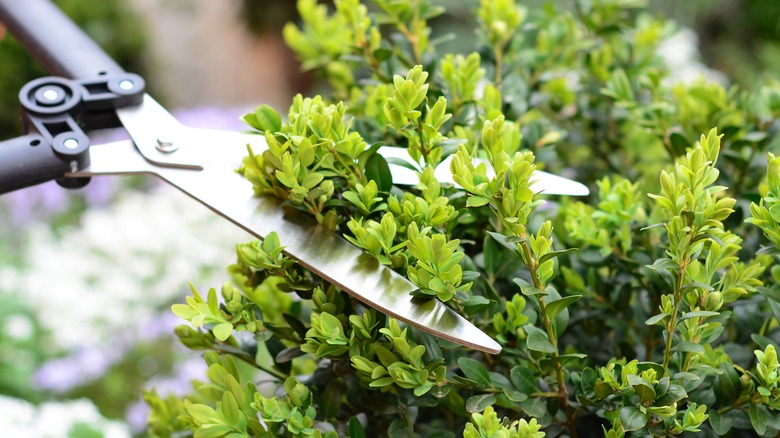
Radovan1/Shutterstock
The 1 foot pruning rule also applies to short bushes that are going to be pruned into a specific shape. For example, you could apply this rule to boxwood hedges, which you should begin shaping when they reach about 12 inches tall. Beginning the pruning process when a plant is so young helps prevent unsightly dead spots in the lower parts of the bush as it grows.
If you are planning to grow a formal-style boxwood hedge, prune off the top 6 inches after planting to encourage full growth on the lower sections of the bush. Allow the plant to grow throughout the warm season. Before it starts putting on new growth in year two, remove half of last year’s new growth. To clarify, don’t remove half of the plant, just half of the new growth. Repeat this process one more year, which will continue to encourage full growth at the base of the plant. Start shaping your boxwood hedge in year three and prune it frequently to ensure it keeps its beautiful style. While this process is similar for most hedge plants, research the specifics on the best practices for the bushes in your landscaping.
